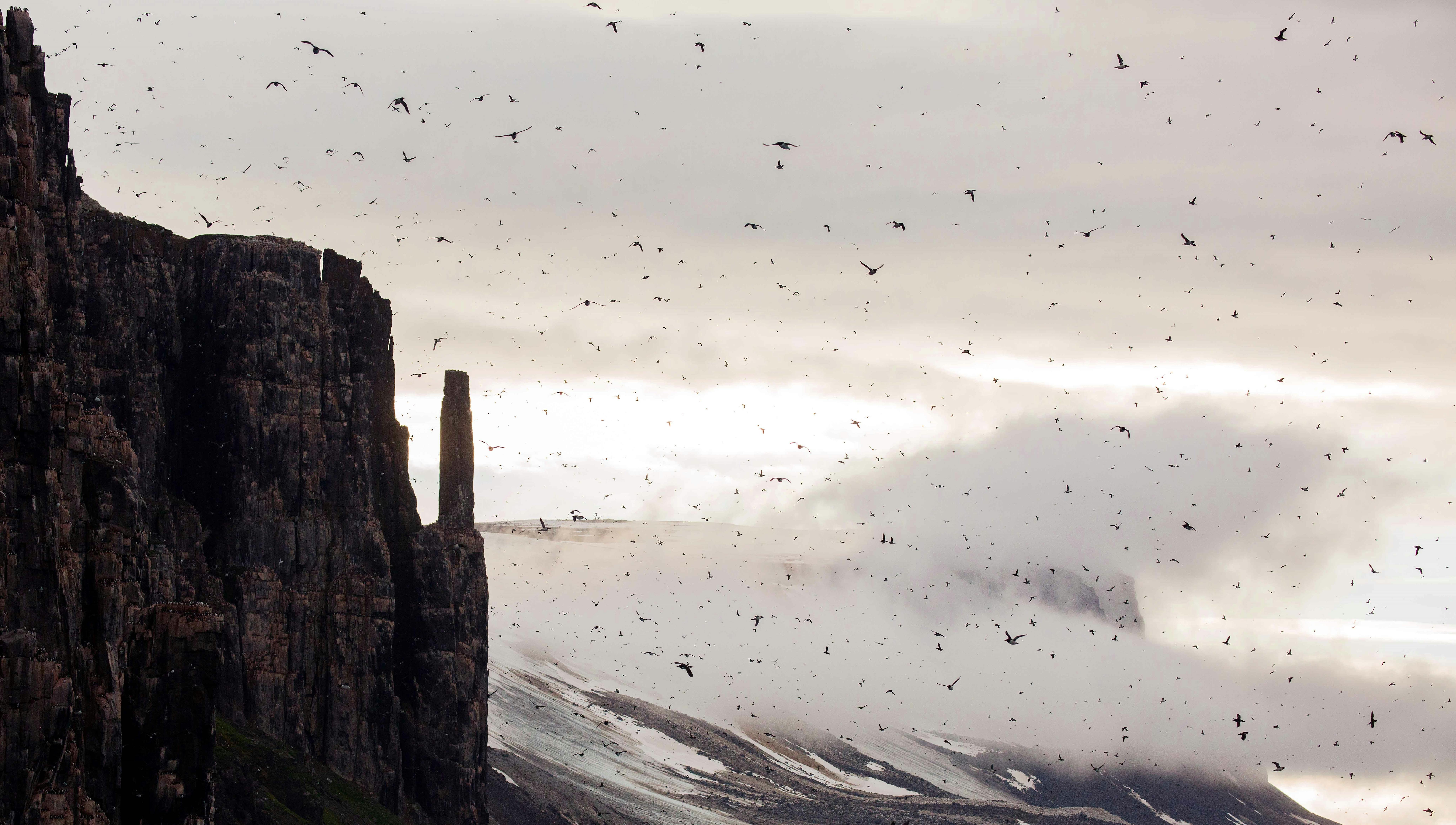Bird Watching at Its Best: Alkefjellet Is Perfect for Seeing Diverse Seabirds
On the wild northern coast of Svalbard, the basalt cliffs of Alkefjellet soar like organ pipes more than 300 feet into the air. Come May and June, under the endless light of the Arctic summer, the sky fills with great sheets of pelagic birds that fly to and from their colonies like beings from another world.
During these months, Alkefjellet is a seabird city, as raucous as Rio de Janeiro or New Delhi; the area comes alive with a cacophony of whistles and calls. Witnessing so many of these seabirds on the cliffs and circling in the skies is incredible.
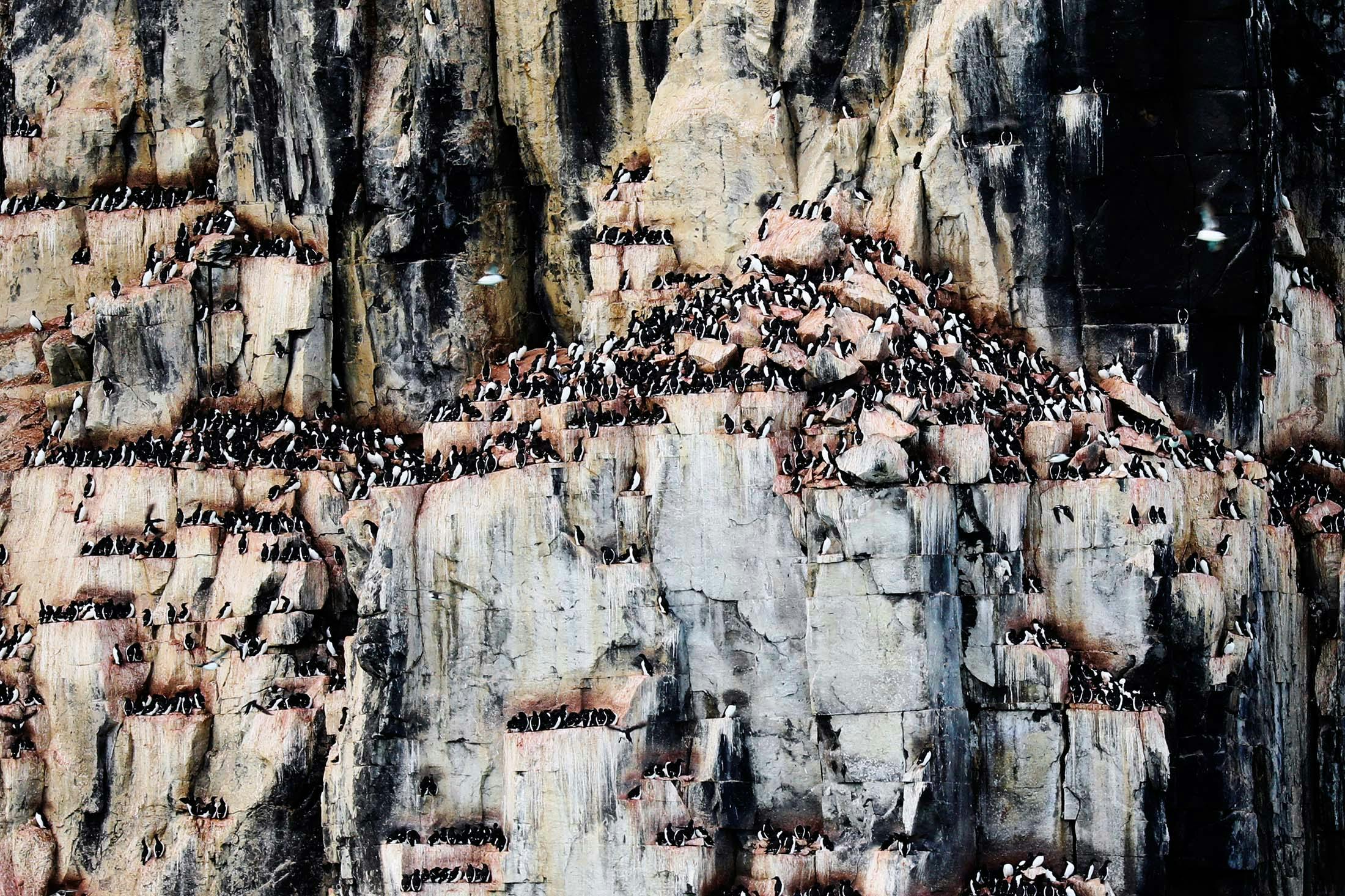
Alkefjellet, Svalbard: An ornithological marvel
With more than three million birds flocking to the archipelago every summer, National Geographic described Svalbard as “one of the world’s great wild places to see birds.”
This is especially true of the north coast. Here, the Atlantic waters are warmed by the Gulf Stream. It keeps the water mostly ice-free and, crucially, rich in fish. In this part of the world — to the north of an archipelago that sits roughly midway between mainland Norway and the North Pole — seabirds fight and feed, nest and survive. It is an ornithological marvel.
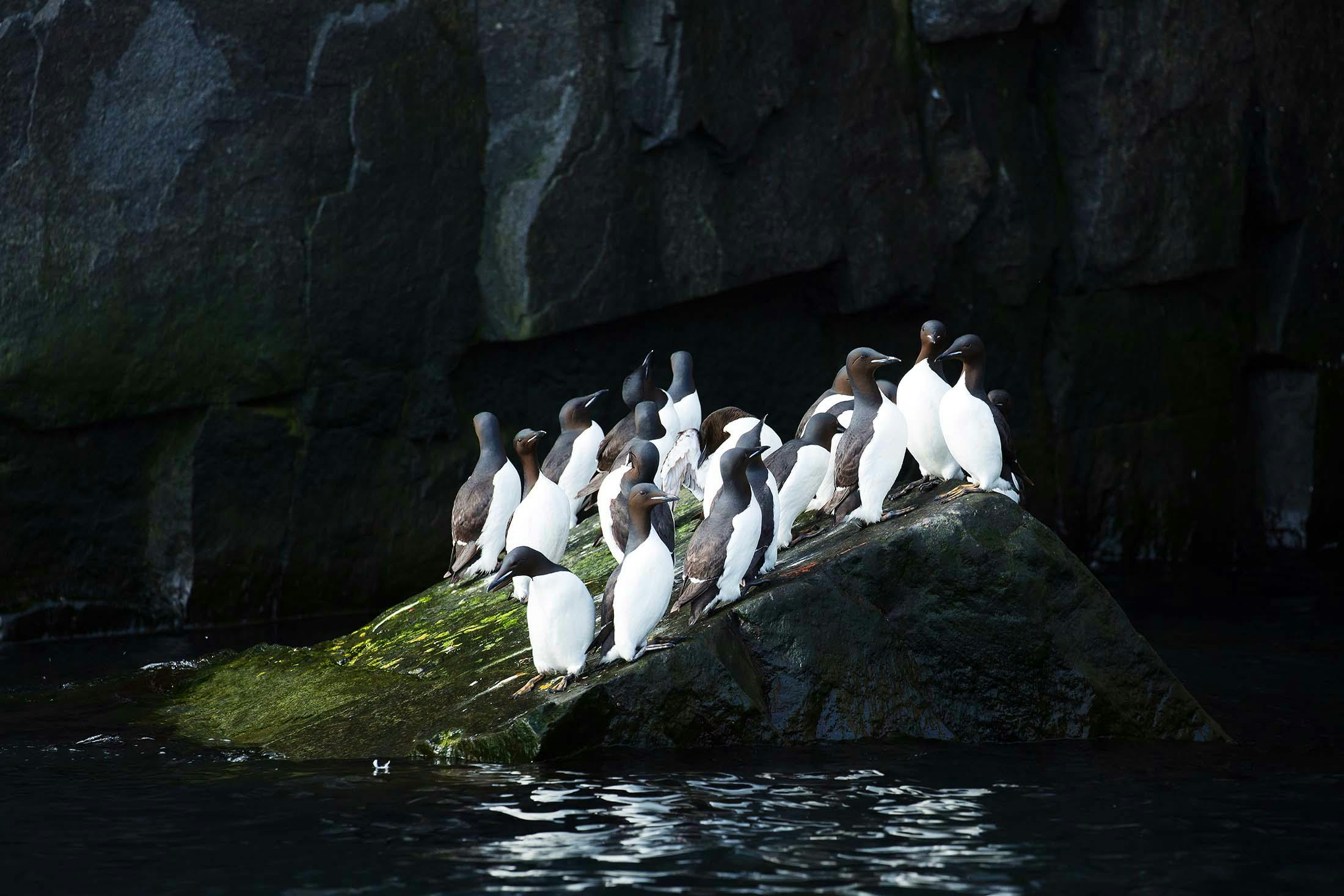
Brünnich’s Guillemot
While it may not be the region’s most common species of bird, the Brünnich’s Guillemot is among the most fascinating and stunning to see. With “great masked beaks,” Brünnich’s Guillemots appear to be dressed up for a grand Venetian carnival, imagines nature writer Adam Nicolson. Sturdy birds, they sit upright like penguins on the cliffs of Alkefjellet. Unlike penguins, they can fly. And every year, around 60,000 breeding pairs swoop into the area to nest on the cliffs’ narrow ledges.
Brünnich’s Guillemots are part of the auk family and are also known by the name Thick-billed Murre. Distinguishable by their perfect dinner suit of black and white and the white line on their bill, the birds form a vast summer colony at Alkefjellet, which is truly impressive.
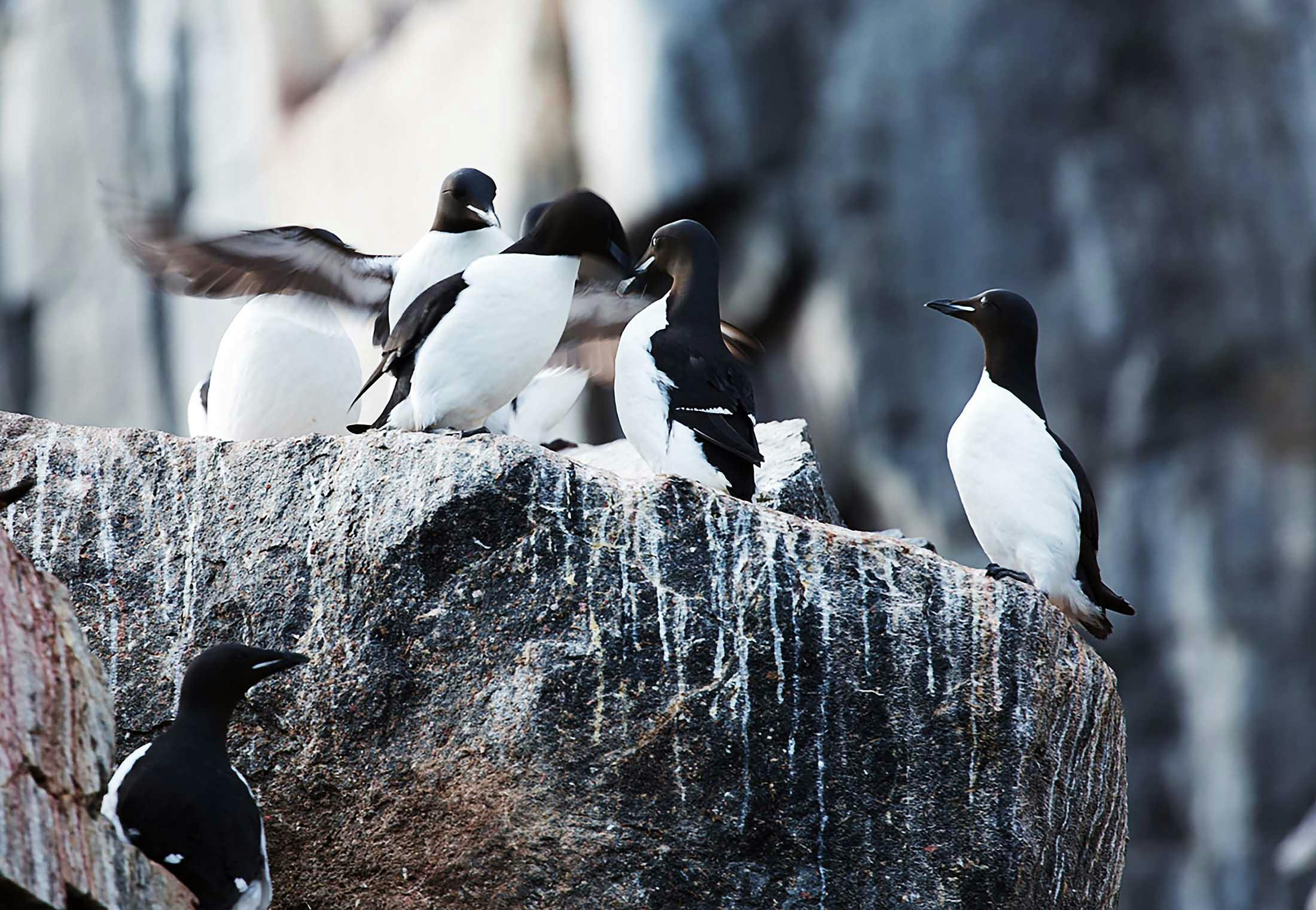
The great divers of Alkefjellet
Yet it’s what the Brünnich’s Guillemot is capable of below the water that truly astounds. Feeding on fish, squid, and crustaceans, these are some of the strongest diving birds on the planet. According to The Independent newspaper, one bird has been recorded making a dive of 630 feet. Typically, they dive between 65 and 131 feet, staying under the water for up to four minutes in search of food.
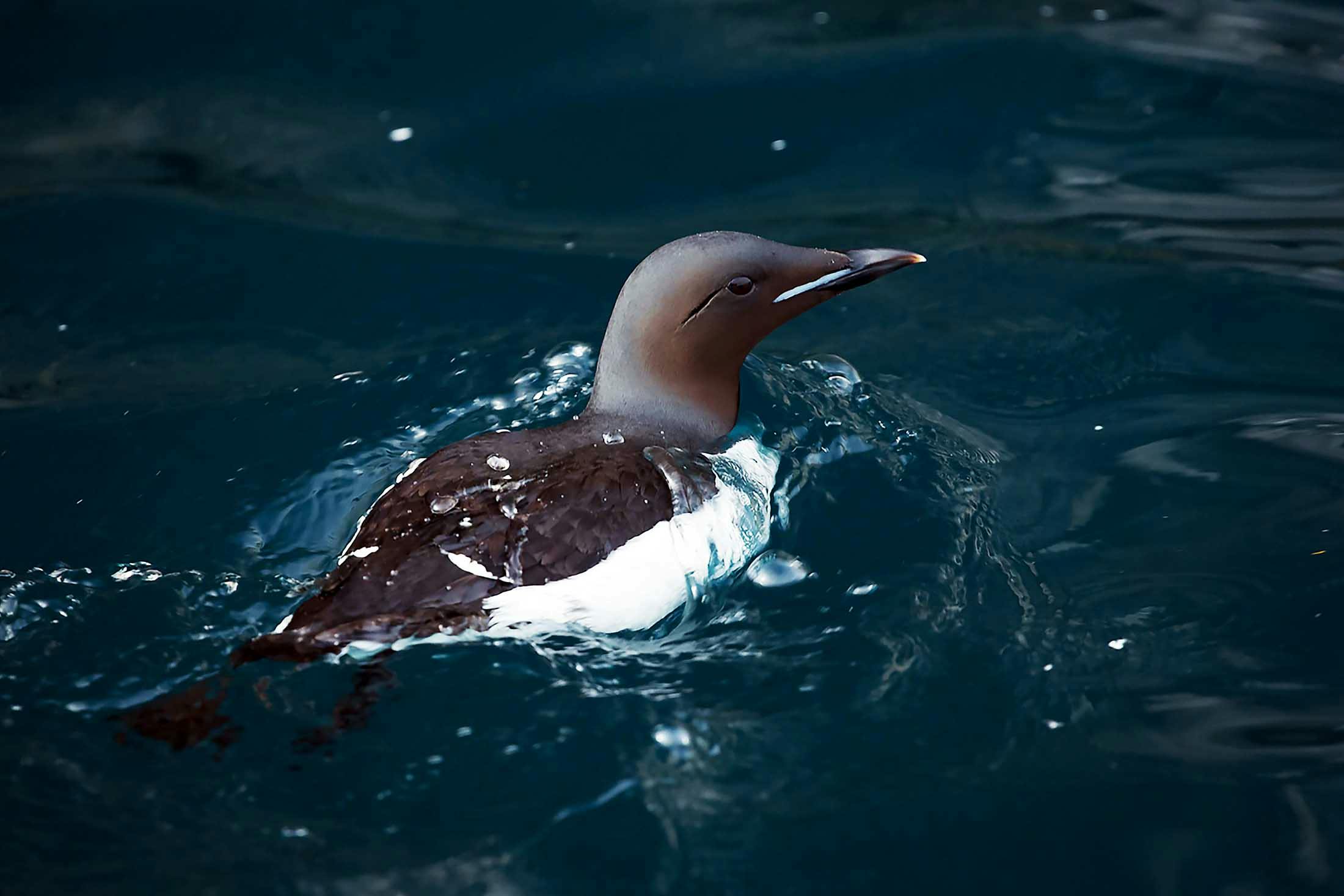
The nesting cycle
Brünnich’s Guillemots’ eggs are laid on bare rock in synchronicity. After around 30–35 days, they hatch around the same time, and after approximately three weeks the fledglings jump from the cliffs to the water. They can’t yet fly and many will fall short. Those who land on the rocks often fall prey to Glaucous Gulls and Arctic foxes.
Those who land on the ocean are accompanied south by their male parent to waters off the coasts of Iceland, Greenland and Newfoundland. According to one of Silversea’s onboard Ornithologists, Dmitri Banin, the chicks stay with their parent till they’re fully-grown — at around two months old, at which point they can fly and feed themselves.
In April and May of the following year, they return. But as the Northern Hemisphere tilts towards winter, only the sounds of the wind and waves are heard in the perpetual night at Alkefjellet.
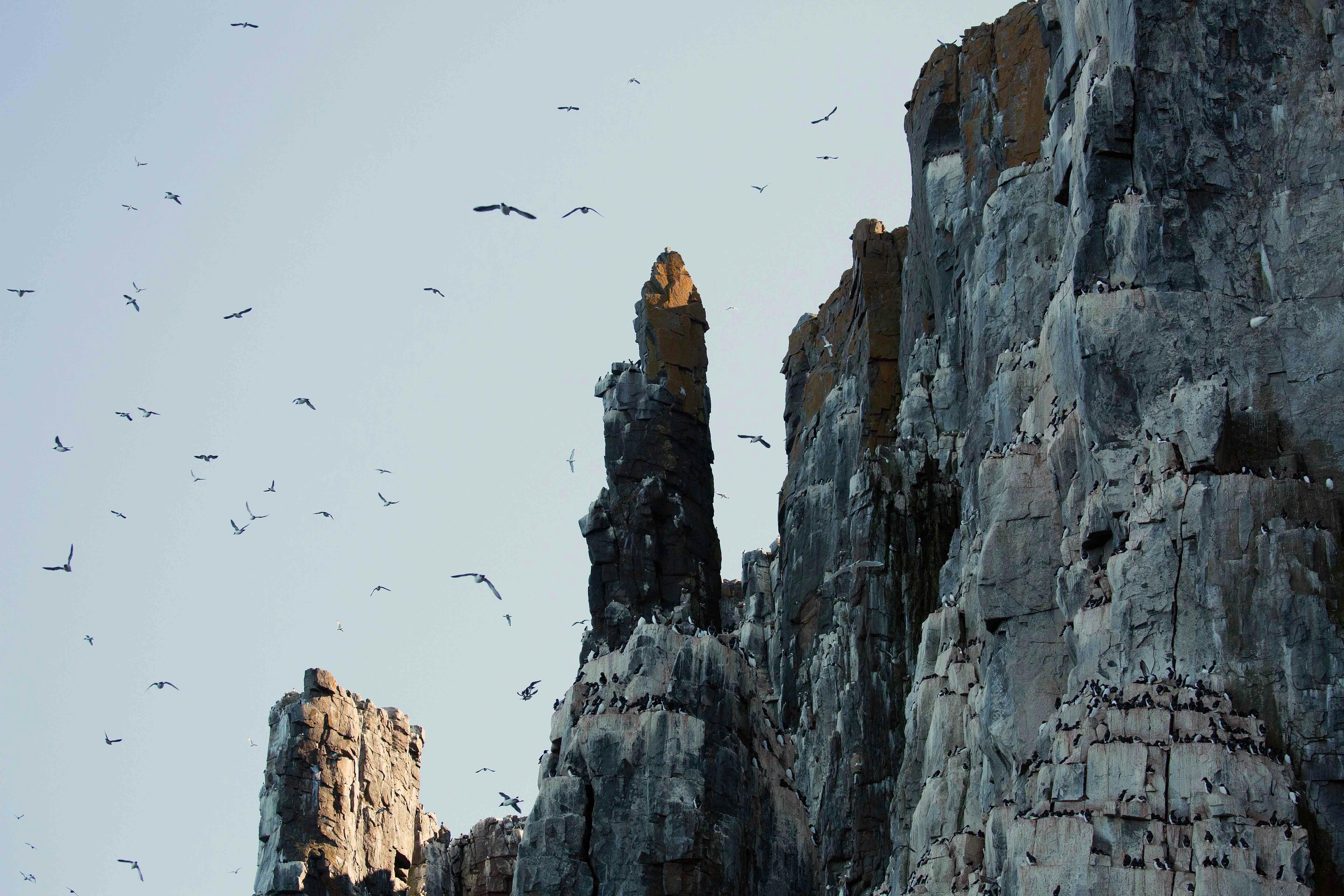
Ready for an epic bird-watching journey? Learn more here.



